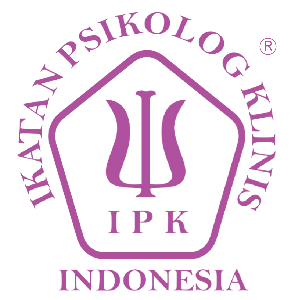Social support, Quality of life, and Death Anxiety among Soldiers in Papua
DOI:
https://doi.org/10.26740/jptt.v16n01.p1-9Keywords:
Death anxiety, military personel, Papua, quality of life, social supportAbstract
Background: Soldiers in conflict areas face heightened death anxiety due to physical challenges, armed conflict, and harsh conditions. Social support and quality of life are vital for their psychological well-being. Objective: To examine the role of quality of life as a mediator between social support and death anxiety among Indonesian National Armed Forces in Papua. Method: Correlational quantitative research involving 165 samples using the accidental sampling technique. Measurement using scales of death anxiety, social support, and quality of life. Path analysis was used to analyze the data. Results: The findings indicate a significant negative relationship between social support and death anxiety (r = -0.421, p < 0.001), as well as a significant positive relationship between social support and quality of life (r = 0.536, p < 0.001). There is a significant negative relationship between quality of life and death anxiety (r = -0.478, p < 0.001), which also acts as a mediator. Conclusion: Social support can improve the quality of life and reduce death anxiety among Indonesian National Armed Forces in Papua. This study suggests psychosocial interventions to improve soldiers' psychological well-being through enhancing social support and quality of life.
Keywords: Death anxiety; military personnel; Papua; quality of life; social support.
Abstrak
Latar Belakang: Tugas prajurit di daerah konflik meningkatkan kecemasan terhadap kematian akibat tantangan fisik, konflik bersenjata, dan kondisi geografis yang sulit. Dukungan sosial serta kualitas hidup prajurit berperan penting dalam kesejahteraan psikologis mereka. Tujuan: Untuk menguji peran kualitas hidup sebagai mediator antara dukungan sosial dan kecemasan kematian pada prajurit TNI di Papua. Metode: Penelitian kuantitatif korelasional dengan melibatkan 165 sampel dipilih menggunakan teknik accidental sampling. Pengukuran dengan skala kecemasan terhadap kematian, dukungan sosial, dan kualitas hidup. Analisis jalur digunakan untuk menganalisis data. Hasil: Temuan menunjukkan hubungan negatif signifikan antara dukungan sosial dengan kecemasan kematian (r = -0,421, p < 0,001), serta hubungan positif signifikan antara dukungan sosial dengan kualitas hidup (r = 0,536, p < 0,001). Hubungan negatif signifikan antara kualitas hidup dengan kecemasan kematian (r = -0,478, p < 0,001), sekaligus berperan sebagai mediator. Simpulan: Dukungan sosial yang kuat dapat meningkatkan kualitas hidup dan mengurangi kecemasan terhadap kematian pada prajurit TNI di Papua. Penelitian ini menyarankan intervensi psikososial untuk meningkatkan kesejahteraan psikologis prajurit melalui penguatan dukungan sosial dan kualitas hidup.
Kata Kunci: Dukungan sosial; kualitas hidup; kecemasan kematian; Papua, prajurit militer.
References
Christanti, D., Prasetyo, E., & Tedjawidjaja, D. (2024). Kualitas Hidup Mahasiswa: Tinjauan Dari Peran Dukungan Sosial Keluarga, Teman, Dan Significant Others. Jurnal Psikologi Tabularasa, 19(1), 59–72. https://doi.org/10.26905/jpt.v19i1.10721
Cohen, S., & Wills, T. A. (1985). Stress, Social Support, and the Buffering Hypothesis. Psychologkal Bulletin, 98(2), 31. https://doi.org/https://doi.org/10.1037/0033-2909.98.2.310
Ebrahimi, B., Hosseini, M., & Rashedi, V. (2018). The Relationship between Social Support and Death Anxiety among the Elderly. Elderly Health Journal. https://doi.org/10.18502/ehj.v4i2.261
Eyni, S., Hashemi, Z., & Ebadi, M. (2022). Relationship between Cognitive Emotion Regulation Strategies and Experiential Avoidance with Death Anxiety of Veterans with Post-Traumatic Stress Disorder: The mediating role of Coping Self-Efficacy. Iranian Journal of War and Public Health, 14(2), 147–155. https://doi.org/10.29252/ijwph.14.2.147
Florian, V., & Kravetz, S. (1983). Fear of Personal Death: Attribution, Structure, and Relation to Religious Belief. Journal of Personality and Social Psychology, 44(3), 600–607. https://doi.org/10.1037/0022-3514.44.3.600
Ghiasi, Z., Alidadi, A., Payandeh, A., Emami, A., & Lotfinia, S. (2021). Health-Related Quality of Life and Death Anxiety Among Hemodialysis Patients. Zahedan Journal of Research in Medical Sciences, 23(2). https://doi.org/10.5812/zjrms.98400
Haq, I., & Mariyati, L. I. (2024). [The Role of Religiosity and Social Support on Anxiety Facing Death in the Elderly] Peranan Religiusitas Dan Dukungan Sosial Terhadap Kecemasan Menghadapi Kematian Pada Lanjut Usia. UMSIDA Preprints Server, 11(1), 1–13.
Hashim, M., Azim, W., Hussain, W., Rehman, F. U., Salam, A., & Rafique, M. (2022). Quality of Life, Perceived Social Support and Death Anxiety Among People Having Cardiovascular Disorders: A Cross-Sectional Study. Pakistan Journal of Medical and Health Sciences, 16(4), 460–463. https://doi.org/10.53350/pjmhs22164460
Iverach, L., Menzies, R. G., & Menzies, R. E. (2014). Death Anxiety And Its Role In Psychopathology: Reviewing The Status Of A Transdiagnostic Construct. Clinical Psychology Review, 34(7), 580–593. https://doi.org/10.1016/j.cpr.2014.09.002
Jaberi, M., Khaleghdoost, M. T., Masoomeh, A., Saman, M., & Ashrafi. (2022). The Relationship of Death Anxiety With Quality of Life and Social Support in Hemodialysis Patients. OMEGA - Journal of Death and Dying.
Kisomi, Z. S., Taherkhani, O., Mollaei, M., Esmaeily, H., Shirkhanloo, G., Hosseinkhani, Z., & Amerzadeh, M. (2024). The Moderating Role of Social Support in The Relationship between Death Anxiety and Resilience among Dialysis Patients. BMC Nephrology, 25(1). https://doi.org/10.1186/s12882-024-03533-x
Ku, X., Hyun, S., & Lee, B. (2022). The Role of Death Anxiety on Marksmanship Performance: a Virtual Reality Simulator Study. Ergonomics, 65(2), 219–232. https://doi.org/10.1080/00140139.2021.1965222
Kyota, A., Kanda, K., Senuma, M., Tsukagoshi, N., Futawatari, T., & Kondo, Y. (2023). The Perception of Life and Death in Patients with End-of-life Stage Cancer: A Systematic Review of Qualitative Research. European Journal of Oncology Nursing, 66. https://doi.org/10.1016/j.ejon.2023.102354
Mohammadi, F., Zahra Masoumi, S., Oshvandi, K., Bijani, M., & Nikrouz, L. (2023). Death Anxiety, Resilience, and Family Chesion in Parents of Children and Adolescents in The end Stages of Life. Frontiers in Psychology, 14. https://doi.org/10.3389/fpsyg.2023.1057003
Mohammadpour, A., Sadeghmoghadam, L., Shareinia, H., Jahani, S., & Amiri, F. (2018). Investigating the Role of Perception of Aging and Associated Factors in Death Anxiety among The Elderly. Clinical Interventions in Aging, 13, 405–410. https://doi.org/10.2147/CIA.S150697
Morowatisharifabad, M. A., Mozaffari, F., Jambarsang, S., & Bidaki, R. (2024). Social Support, Body Image, and Death Anxiety in Later Life: A Cross-Sectional Study in Yazd City, Iran. Elderly Health Journal. https://doi.org/10.18502/ehj.v10i1.1596
Musisi, S., & Kinyanda, E. (2020). Long-Term Impact of War, Civil War, and Persecution in Civilian Populations—Conflict and Post-Traumatic Stress in African Communities. Frontiers in Psychiatry, 11. https://doi.org/10.3389/fpsyt.2020.00020
Negara, D. Y., Abidin, Z., & Hanam, Y. (2024). Resilience of Army Soldiers Who are Carrying Out Operational Tasks in the Papua Region. Guidena: Jurnal Ilmu Pendidikan, Psikologi, Bimbingan Dan Konseling, 14(2), 492. https://doi.org/10.24127/gdn.v14i2.9538
Okfrima, R., Yola, E. P., & Fikri, H. T. (2021). Hubungan Antara Dukungan Sosial Keluarga dengan Kualitas Hidup Pada Lansia Di Nagari Paninjauan Kec. X Koto Diatas Kab. Solok. Psyche 165 Journal, 14(02).
Ramchand, R., Rudavsky, R., Grant, S., Tanielian, T., & Jaycox, L. (2015). Prevalence of, Risk Factors for, and Consequences of Posttraumatic Stress Disorder and Other Mental Health Problems in Military Populations Deployed to Iraq and Afghanistan. Current Psychiatry Reports, 17(5). https://doi.org/10.1007/s11920-015-0575-z
Rayatpisheh, F., Torabizadeh, C., Kalyani, M. N., & Farsi, Z. (2023). Relationship between Resilience and Death Anxiety of The Older Adults During The Coronavirus Disease 2019 (COVID-19) Pandemic. BMC Geriatrics, 23(367). https://doi.org/10.1186/s12877-023-04086-8
RNZ. (2023). Indonesia upgrades operation in West Papua. RNZ. https://www.rnz.co.nz/international/pacific-news/488271/indonesia-upgrades-operation-in-west-papua
Salari, N., Hosseinian-Far, A., Jalali, R., Vaisi-Raygani, A., Rasoulpoor, S., Mohammadi, M., Rasoulpoor, S., & Khaledi-Paveh, B. (2020). Prevalence of Stress, Anxiety, Depression among The General Population During The COVID-19 Pandemic: A Systematic Review and Meta-analysis. Globalization and Health, 16(1). https://doi.org/10.1186/s12992-020-00589-w
Sarafino, E. P., & Smith, T. W. (2011). Health Psychology Biopsychosocial Interactions (Seventh Edition). John Willey & Sons, Inc.
Siltag, V., Bulbuloglu, S., Igdir, A., & Kaya, M. (2023). The Effect of Perceived Social Support by Nurses on Their Fear of Death Post–COVID-19 Pandemic Period. Journal of Radiology Nursing, 42(4), 509–514. https://doi.org/10.1016/j.jradnu.2023.09.002
Telecan, M. I., Rațiu, L. C., & Rus, C. L. (2023). Death Anxiety and Extra-role Performance in Military and Non-military employees: A Predictive Study. Psihologia Resurselor Umane, 21(1), 64–78. https://doi.org/10.24837/pru.v21i1.525
Templer, D. I. (1970). The contruction and validation of a Death Anxiety Scale. The Journal of General Psychology, 82, 165–177. https://doi.org/10.1080/00221309.1970.9920634
Tomer, A., & Eliason, G. (1996). Toward a Comprehensive Model of Death Anxiety. Death Studies, 20(4), 343–365. https://doi.org/10.1080/07481189608252787
Vehling, S., Malfitano, C., Shnall, J., Watt, S., Panday, T., Chiu, A., Rydall, A., Zimmermann, C., Hales, S., Rodin, G., & Lo, C. (2017). A Concept Map of Death-related Anxieties in Patients with Advanced Cancer. BMJ Supportive and Palliative Care, 7(4), 427–434. https://doi.org/10.1136/bmjspcare-2016-001287
WHOQOL Group. (1996). WHOQOL-BREF Introduction, Administration, Scoring and Generic Version of the Assessment. World Health Organization. https://iris.who.int/handle/10665/63529
Yousefi A. M., Majzoobi, M. R., Janjani, P., & Forstmeier, S. (2024). The Relationship between the Meaning of Life, Psychological Well-being, Self-care, and Social Capital, with Depression and Death Anxiety in the Elderly Living in Nursing Homes: The Mediating Role of Loneliness. Heliyon, 10(9). https://doi.org/10.1016/j.heliyon.2024.e30124
Downloads
Published
How to Cite
Issue
Section
License
Copyright (c) 2025 Selyo Febrio Xavier, Rr. Amanda Pasca Rini, Eko April Ariyanto

This work is licensed under a Creative Commons Attribution 4.0 International License.
Authors who publish in this journal agree to the following terms:
Copyright in any article is held by the author.
The author grants the journal, publication rights with the work simultaneously licensed under a Creative Commons Attribution License that allows others to share the work with an acknowledgment of the work's authorship and initial publication in this journal.
Authors may enter into separate, additional contractual arrangements for the non-exclusive distribution of the journal's published version of the work (e.g., posting it to an institutional repository or publishing it in a book), with an acknowledgment of its initial publication in this journal.
Authors are permitted and encouraged to post their work online (e.g., in an institutional repository or on their website) prior to and during the submission process, as this can lead to productive exchanges, as well as earlier and greater citation of published work.
 Abstract views: 519
,
Abstract views: 519
, PDF Downloads: 609
PDF Downloads: 609


















